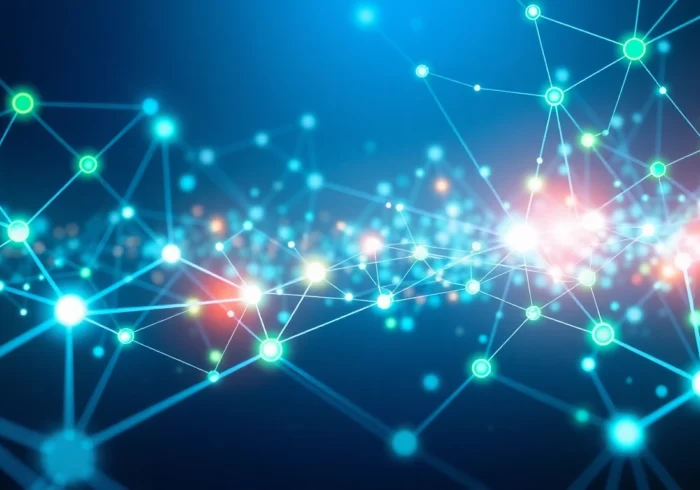Understanding the Human or Not AI Game
In an era where artificial intelligence continues to evolve at a remarkable pace, the need to distinguish human interactions from machine-generated responses has never been more pressing. The human or not game exemplifies this challenge, serving as an innovative social Turing test that puts individual perception and critical thinking to the ultimate test. This interactive experience not only entertains but also offers profound insights into the capabilities of modern AI and human communication. To understand its significance, we must explore the origins, technological underpinnings, and the social implications of this engaging game.
What is the Human or Not AI Challenge?
The core premise of the human or not AI challenge is simple: you engage in a brief, anonymous text conversation with an unknown entity—either a fellow human or an AI bot powered by sophisticated language models like GPT-4. After just two minutes of chatting, your task is to determine whether the other participant is human or artificial intelligence. Despite its straightforward format, the game unfolds as a complex cognitive puzzle. As AI systems become increasingly adept at mimicking human language nuances, the game shifts from mere amusement to a compelling examination of AI’s realism.
History and Development of the Game
The conceptual foundation of the human or not AI game traces back to the legendary Turing Test proposed by Alan Turing in 1950, which aimed to evaluate a machine’s ability to exhibit behavior indistinguishable from that of a human. Over the decades, the evolution of conversational AI, especially with the advent of deep learning and advanced natural language processing, has led to contemporary iterations of Turing-like challenges. The modern version, powered by models like GPT-4, was developed as both a research tool and an entertainment platform. It offers a practical, real-time application where users can experience firsthand the moment when human and AI responses converge, blurring the lines of authenticity.
Core Technologies Behind Human or Not AI
The backbone of the human or not AI game involves cutting-edge AI models coupled with robust web development technologies. Key AI components include large-scale language models such as GPT-4, which are trained on vast datasets to simulate human-like conversations. These models utilize transformer architectures for context understanding and generate responses that reflect nuances, idioms, and emotional cues. Complementing the AI technology, the platform leverages a suite of modern tools such as Amplitude for analytics and Webflow for responsive design, ensuring an engaging user experience. The integration of real-time communication protocols, like WebSocket, facilitates instantaneous interaction, critical for maintaining the game’s immersion and challenge.
How to Play and Win the Human or Not Test
Step-by-Step Guide to Participating
- Visit the Platform: Access the game through official sites such as human or not or affiliated pages.
- Initiate a Conversation: Click the start button to pair with a random participant—either a human or an AI.
- Engage in Dialogue: Spend two minutes exchanging messages. During this period, pay close attention to language patterns, response timing, and emotional cues.
- Make Your Guess: After the chat, analyze your conversation and select whether you believe the partner was a human or AI.
- Review Results: The platform reveals whether your guess was correct, enhancing your understanding and perception skills.
Tips for Improving Your Guessing Accuracy
- Focus on Language Style: Human responses often contain subtle errors, slang, or typographical quirks that AI tends to avoid or handle with unnatural precision.
- Observe Response Timing: AI responses are typically instant or near-instant, whereas humans might exhibit slight delays or inconsistencies.
- Test for Emotional Nuance: Humans naturally inject humor, sarcasm, or emotional depth, which AI models simulate but may still lack authentic spontaneity.
- Ask Odd or Unexpected Questions: Unusual queries tend to trip up AI, revealing its limitations in handling non-standard inputs.
Analyzing Responses: Clues That Reveal Humanity or AI
Successful players hone in on specific cues within responses. For example, AI-generated replies might display overly coherent structure, lack genuine personal anecdotes, or exhibit repetitive patterns. Conversely, human responses often include minor grammatical slips, idiosyncratic expressions, or nuanced emotional content. Recognizing these subtleties takes practice but significantly enhances your ability to make accurate judgments.
Benefits of Playing Human or Not AI
Sharpening Critical Thinking Skills
Engaging with the human or not AI game challenges players to develop analytical skills as they scrutinize responses for authenticity. This process fosters heightened attention to detail, improves pattern recognition, and strengthens intuition—traits vital for navigating an increasingly AI-saturated landscape.
Understanding AI Capabilities in Conversation
Playing the game provides firsthand insight into the strengths and limitations of modern AI systems. Users observe how AI manages context, emotional expression, and language complexity, creating a more informed perspective that is crucial for both users and developers working with or assessing such technology.
Engaging with Cutting-Edge Technology Safely
The platform emphasizes user safety and privacy, ensuring conversations are conducted anonymously. By exploring AI interactions within secure environments, players gain a deeper appreciation of intelligent systems without exposing themselves to security risks or data breaches.
Analyzing Results and Interpreting Trends
What Do Success Rates Tell Us?
Recent studies and user data reveal that, on average, players correctly identify AI chatbots approximately 68% of the time and humans about 73% of the time. These figures highlight the progress AI has made in simulating human conversation while underscoring areas where humans still excel, especially in emotional expression and unpredictability.
Insights From Recent Data and Studies
Continuous data collection indicates that as AI models like GPT-4 advance, the difficulty in distinguishing bots from humans increases. The game serves as a benchmark for measuring AI sophistication over time. It also reveals that certain types of questions or response styles are more effective at exposing AI, guiding developers to refine conversational models.
Impact on AI and Human Interaction Awareness
The widespread engagement with the human or not AI game educates users on the evolving landscape of AI capabilities, promoting digital literacy. It fosters a critical mindset, encouraging users to question the authenticity of digital interactions, thus nurturing a more cautious and informed online community.
Joining the Community and Future Perspectives
How to Engage with Fellow Players
Players can participate in online forums, social media groups, and dedicated discussion boards to share insights, tips, and strategies. Community features often include leaderboards, challenge modes, and discussion threads that facilitate collective learning and improvement.
Community Tips and Discussion Forums
Engaging with fellow enthusiasts enhances the overall experience. Forums like Reddit’s r/Humanornot provide valuable tips on question phrasing, response analysis, and game strategies. Sharing real-game experiences fosters a collaborative environment promoting continual skills development.
Future of Human or Not AI and Technological Advances
As AI continues to evolve, the human or not AI game is poised to become even more sophisticated, potentially incorporating multimodal inputs like voice, video, or emotion detection. Future iterations may involve more immersive experiences, integrating VR or AR platforms to challenge user perception further. The ongoing evolution ensures that this game remains a vital tool for understanding AI’s trajectory and human-AI interaction dynamics.



